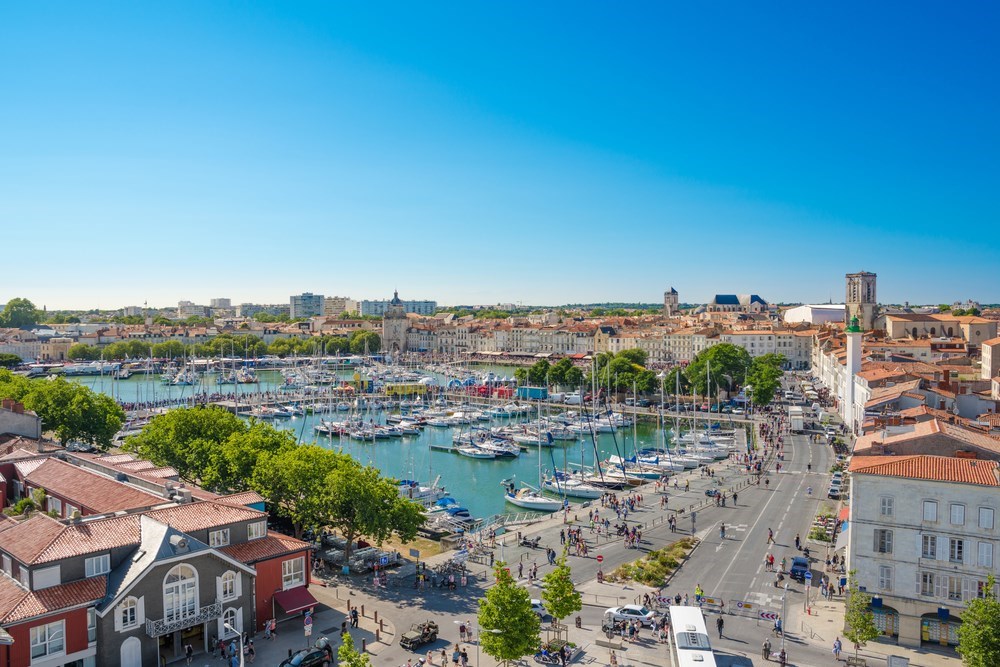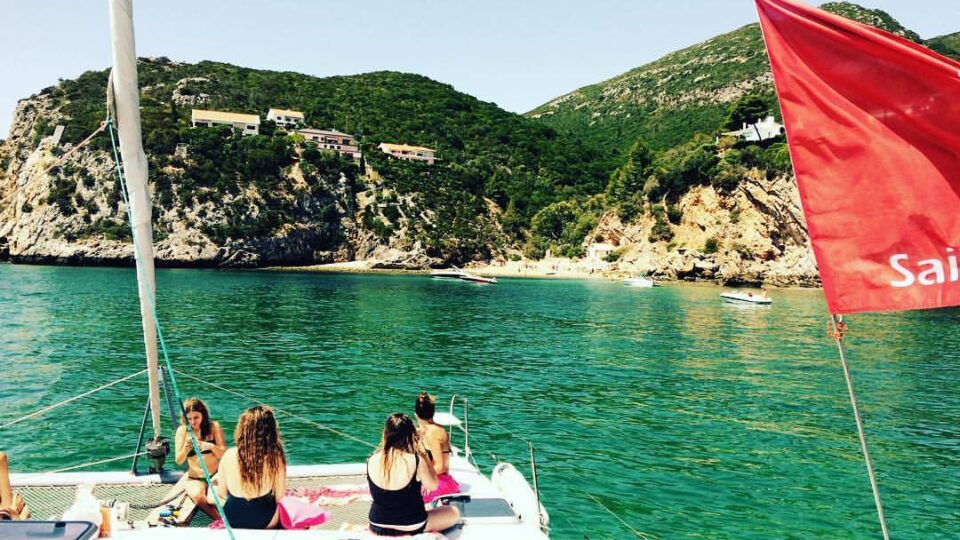Portugal Sailing Trip Itinerary
Portugal has over 1000km of Atlantic Ocean coastline along with the Azores archipelago which is located in the North Atlantic Ocean. When sailing to Portugal you’ll see beautiful towns along the coastline, such as Lisbon, the Algarve, Porto, and other tranquil small villages. In general, Portugal has mild winds and at certain times of the year quite a swell, so it’s a great place for water sports enthusiasts. Another advantage of sailing in Portugal is that you can sail at almost any time of the year due to its mild climate. With over 300 days of sunshine per year, magnificent coves, beaches, and a remarkable coastline to explore while sailing. So, keep reading in order to take some ideas and explore this beautiful sailing itinerary!
General Info about Weather and Climate
The best time to sail in Portugal is almost any time of the year. Portugal has a Mediterranean climate although this might change sometimes due to its Atlantic Ocean coastline. In general, the country has long dry summers and mild wet winters. If you sail to Portugal during the summer months you might experience 10 hours of sunshine and up to 6 hours of sunshine during the winter months.
In summer, the average temperature is 28c (83f) and in the winter temperature varies from 14 to 16c (57 to 60f). The winter months are mild and offer great sailing conditions. Temperatures rarely drop below +10°C and between November and March, you’ll see clear blue skies and a light breeze during the day. Summer months are warm and characterized by dry weather and usually hot temperatures throughout the day. As for the wind conditions, they’re greatly influenced by the Atlantic Ocean. These winds can be light or moderate, and vary depending on the location of the coastline. Lastly, the winds tend to blow from a south-easterly direction and a northerly direction.
Start your Sailing Trip from Porto
The historic city of Porto is the second largest after Lisbon. It’s located on the west coast at the mouth of the river Douro. The historic center of Oporto was recognized as a World Heritage Site by UNESCO in 1996. Porto is quite famous for its wine export that is produced in the vineyards located in the upper range of the river. If you visit the south bank of the river, in Vila Nova de Gaia, you’ll see many old port wine lodges that still survive from the past. The opening of the new Douro Marina situated in the estuary of the river facilitates a visit to Porto’s old town and the marina is more secured and accessible than the old one named Leixoes.
Here Are a Few Places to Visit During Your Sailing Trip to Portugal
Figueira da Foz
Continue sailing for another 62 miles and anchor to the harbor of Figueira da Foz. Figueira da Foz is a coastal resort and harbor situated near the River Mondego. It’s also nearby the historic Portuguese former capital of Coimbra about 40 kilometers inland. The city was an important center of shipbuilding during the 19th century and then became a popular tourist destination during the 1920s.
On the north bank and upriver of the port there’s a small marina that can accommodate sailboats of up to 16 meters. There’s good shelter in the river although the entrance might be dangerous in strong onshore winds. In case of a high swell, the port is closed altogether. The prevailing winds along this coast are the northerly trade winds and sometimes Atlantic depressions bring strong onshore winds and currents. This happens mostly during the winter so if you’re sailing in the summer months you’ll be fine.

>>Also Read: Best Sailing Destinations in Europe
Nazaré
After Figueira da Foz continue navigating to Nazaré for just 45 miles south. Nazaré is well-known for having the best beaches on the whole Atlantic coast of Portugal. This is because the coastline stretches for several miles to either side of the harbor. Moreover, Nazaré is a famous surf destination. Even though the town gets crowdy in the summer it has managed to retain many of its local traditions. Lastly, the harbor of Nazaré is one of the best-sheltered along the coastline. This is due to its location which is at the head of a huge ocean trench and stretches for many miles offshore, thus it can be entered in the worst weather conditions.
Cascais
You shouldn’t miss mooring at the full-service marina of Cascais when sailing in Portugal. Even though Cascais was a small fishing village it’s now an elegant resort town, with many boutiques, hotels, and restaurants. It’s situated on the north side of River Tejo which flows through Lisbon. I’d totally recommend you visiting the Sintra-Cascais Natural Park, enjoy a hike, and admire the virgin natural beauty!
Lagos
Continue navigating to Lagos located on the Algarve coast; a vibrant town full of activity, nightlife, and attractions. The beaches in Lagos are considered the best in the region and the rocky headland of Ponta da Piedade with the yellow lighthouse is a must-see site. Moreover, the golden sands of Meia Praia to the east and other sandy beaches in the south are definitely worth the swim. In Lagos, the cliffs have eroded and formed gnarled stone arches and tunnels which create numerous tiny coves with crystal-clear and turquoise waters. The entrance to Lagos is 1.5 miles north of Ponta da Piedade and at the southern end of the bay, there are many great anchorages to relax in your sailboat and enjoy the landscape. For example, Portimao and Ferragudo located 12 miles to the east offer a great sheltered anchorage.
Faro
Of course, Faro is a not to be missed destination on the Algarve coast. Located at the heart of the Formosa Estuary and surrounded by fertile valleys of trees, olives, and the famous almonds of Algarve. The city of Faro is around 50 nautical miles away from Lagos and has a lively harbor. You shouldn’t miss visiting the traditional market and the old town to stroll around and enjoy the vibrant atmosphere. Nature in Faro is abundant due to the thousands of hectares of the estuary around Faro that are home to many migrating birds and to other endemic fauna species.
You can also visit the islets in the Formosa Estuary that are only accessible by boat. Moreover, the Praia de Farol is ideal for water sport enthusiasts. If you have time, don’t miss visiting the islands of Barreta and Culatra over the lagoon and swim in the deep blue waters.
Tavira
The last stop on our suggested sailing itinerary is Tavira which is located 15 miles east of Faro, in the heart of the Ria Formosa Natural Reserve. You should definitely visit the traditional fishermen’s port and walk around the picturesque town. You can anchor in the channel behind the long sandy Ilha de Tavira. The Venice of Algarve is extending to the Gilão and Segua Rivers. Moreover, it was built with a low-rise Renaissance architecture and stands out from other resorts in the region.
>>Also Read: Best Marinas in Europe
The Bottom Line
Portugal has an enormous coastline and is blessed with favorable weather conditions for sailing throughout the year. The mild climate and light winds make the Portuguese coast one of the top European destinations for sailors. Another important characteristic is that you can sail all year round, but make sure to check the weather forecast beforehand. Across the country, you’ll visit many marinas and docks as well as great anchorages that provide a wide range of amenities. Hope that you’ll get inspired by this article and set sail to explore the Portuguese coastline. Wish you a Boa viagem!
